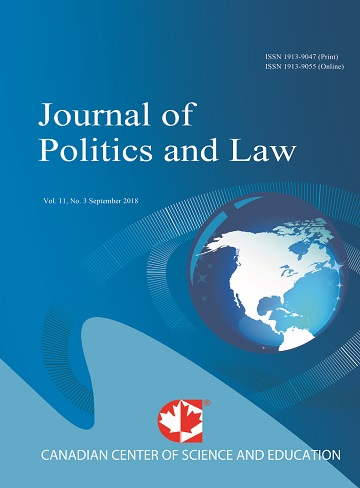How the Corruption Quadruple Helix Affects BRIC: A Case Study of Corruption in Big Emerging Economies
- Raul Gouvea
- Manuel Montoya
- Steve Walsh
Abstract
This study surveys the institutional conditions that produce corruption in BRIC (Brazil, Russia, India and China) nations. While this study focuses on BRIC as a case study in institutional corruption, it emphasizes the special role that each nation plays in the evolution of BRIC as a part of the global political economy. We utilize a helix structure as a means of expressing the intertwined, trans-dimensional aspects of corruption in BRIC among its various institutions. Our “quadruple helix model” reveals that the presence of a strong, meaningful alternative civil society is a significant fourth helix in several big emerging economies. This model demonstrates that data collected from multiple sources can effectively characterize the multi-dimensional systemic features of corruption if they are understood as institutional forces that evolve in sync with one another. This model demonstrates that, while the conventional wisdom that economic growth reduces corruption, bureaucratization and other institutional problems can increase corruption, especially when there are few conscious efforts to manage growth in relation to the evolution of civil society.
- Full Text:
 PDF
PDF
- DOI:10.5539/jpl.v6n2p1
Journal Metrics
h-index (2017): 14
i10-index (2017): 39
h5-index (2017): 9
h5-median (2017): 11
Index
- Academic Journals Database
- ACNP
- ANVUR (Italian National Agency for the Evaluation of Universities and Research Institutes)
- Berkeley Library
- CNKI Scholar
- COPAC
- CrossRef
- DTU Library
- EBSCOhost
- Elektronische Zeitschriftenbibliothek (EZB)
- EuroPub Database
- Excellence in Research for Australia (ERA)
- Genamics JournalSeek
- GETIT@YALE (Yale University Library)
- Ghent University Library
- Google Scholar
- Harvard Library
- HeinOnline
- INDEX ISLAMICUS
- Infotrieve
- Jisc Library Hub Discover
- JournalGuide
- JournalTOCs
- LOCKSS
- MIAR
- Mir@bel
- NewJour
- Norwegian Centre for Research Data (NSD)
- Open J-Gate
- PKP Open Archives Harvester
- Publons
- Pubmed journal list
- RePEc
- ROAD
- Scilit
- SHERPA/RoMEO
- Standard Periodical Directory
- Stanford Libraries
- UCR Library
- Ulrich's
- UniCat
- Universe Digital Library
- UoS Library
- WorldCat
- Zeitschriften Daten Bank (ZDB)
Contact
- William TaiEditorial Assistant
- jpl@ccsenet.org
